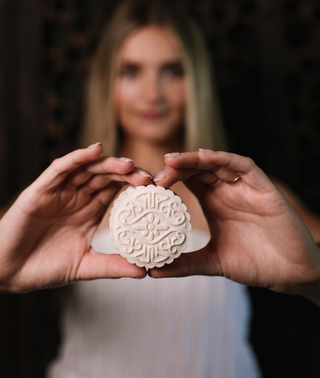In the realm of hair care, the debate between conditioner bars and traditional liquid conditioners has sparked considerable interest. With the growing emphasis on sustainability and eco-friendly choices, conditioner bars have surged in popularity. However, understanding the nuances between these two options is crucial in making an informed decision that suits your hair type and lifestyle.
Understanding the Basics
Traditional Conditioners:
Traditional conditioners come in liquid form, often housed in plastic bottles. They contain a blend of water, conditioning agents, preservatives, and various additives tailored to address specific hair concerns. The application involves dispensing the product into your palm and evenly distributing it through wet hair before rinsing.
Conditioner Bars:
On the other hand, conditioner bars are solid formulations that resemble a bar of soap. They typically contain concentrated natural ingredients, excluding water, and are often packaged in eco-friendly materials. To apply, you glide the bar directly onto wet hair or rub it between your hands to create a lather before working it through your hair.
Environmental Impact
Traditional Conditioners:
The primary concern with traditional conditioners lies in their packaging. Most are housed in plastic bottles, contributing to the staggering plastic waste in landfills and oceans. However, some brands are now shifting towards recyclable or biodegradable packaging to reduce their environmental footprint.
Conditioner Bars:
Conditioner bars are hailed for their eco-friendly packaging options and reduced carbon footprint. They often come in minimal or plastic-free packaging, eliminating the need for bulky plastic bottles. Additionally, their concentrated formulas typically require less energy for transportation due to reduced weight and volume.
Hair Benefits
Traditional Conditioners:
Liquid conditioners offer a wide range of formulations catering to different hair types and concerns. They often contain a higher percentage of conditioning agents, providing immediate softness and manageability to the hair. However, their effectiveness might vary based on the specific ingredients and hair type.
Conditioner Bars:
Conditioner bars contain natural oils and butters that can deeply nourish and moisturize hair without the need for synthetic additives. While they may take some adjustment time for your hair to adapt, they can provide a more natural, long-term benefit by avoiding harsh chemicals found in some liquid conditioners.
Usage and Convenience
Traditional Conditioners:
Liquid conditioners offer familiarity and ease of use. The dispensing mechanism allows for precise control over the amount used, and their consistency makes them easier to distribute evenly throughout the hair.
Conditioner Bars:
Conditioner bars might require a slight learning curve in terms of application. However, once accustomed, they can be more travel-friendly, as they don't spill or leak, and their solid form makes them TSA-compliant. Moreover, their concentrated formula often means a longer lifespan compared to liquid counterparts.
Cost Consideration
Traditional Conditioners:
The price range for traditional conditioners varies widely based on brand, quality, and specific formulations. Some premium brands might be more expensive, while generic options can be budget-friendly.
Conditioner Bars:
Initially, conditioner bars might seem more expensive than their liquid counterparts. However, their longer lifespan and concentrated formula often make them more cost-effective in the long run.
Conclusion
In the dilemma between conditioner bars and traditional conditioners, there's no one-size-fits-all answer. Your choice might depend on factors like environmental concerns, hair type, convenience, and budget. Experimentation might be necessary to find what works best for your hair's unique needs and personal preferences.
Understanding the Basics
Traditional Conditioners:
Traditional conditioners come in liquid form, often housed in plastic bottles. They contain a blend of water, conditioning agents, preservatives, and various additives tailored to address specific hair concerns. The application involves dispensing the product into your palm and evenly distributing it through wet hair before rinsing.
Conditioner Bars:
On the other hand, conditioner bars are solid formulations that resemble a bar of soap. They typically contain concentrated natural ingredients, excluding water, and are often packaged in eco-friendly materials. To apply, you glide the bar directly onto wet hair or rub it between your hands to create a lather before working it through your hair.
Environmental Impact
Traditional Conditioners:
The primary concern with traditional conditioners lies in their packaging. Most are housed in plastic bottles, contributing to the staggering plastic waste in landfills and oceans. However, some brands are now shifting towards recyclable or biodegradable packaging to reduce their environmental footprint.
Conditioner Bars:
Conditioner bars are hailed for their eco-friendly packaging options and reduced carbon footprint. They often come in minimal or plastic-free packaging, eliminating the need for bulky plastic bottles. Additionally, their concentrated formulas typically require less energy for transportation due to reduced weight and volume.
Hair Benefits
Traditional Conditioners:
Liquid conditioners offer a wide range of formulations catering to different hair types and concerns. They often contain a higher percentage of conditioning agents, providing immediate softness and manageability to the hair. However, their effectiveness might vary based on the specific ingredients and hair type.
Conditioner Bars:
Conditioner bars contain natural oils and butters that can deeply nourish and moisturize hair without the need for synthetic additives. While they may take some adjustment time for your hair to adapt, they can provide a more natural, long-term benefit by avoiding harsh chemicals found in some liquid conditioners.
Usage and Convenience
Traditional Conditioners:
Liquid conditioners offer familiarity and ease of use. The dispensing mechanism allows for precise control over the amount used, and their consistency makes them easier to distribute evenly throughout the hair.
Conditioner Bars:
Conditioner bars might require a slight learning curve in terms of application. However, once accustomed, they can be more travel-friendly, as they don't spill or leak, and their solid form makes them TSA-compliant. Moreover, their concentrated formula often means a longer lifespan compared to liquid counterparts.
Cost Consideration
Traditional Conditioners:
The price range for traditional conditioners varies widely based on brand, quality, and specific formulations. Some premium brands might be more expensive, while generic options can be budget-friendly.
Conditioner Bars:
Initially, conditioner bars might seem more expensive than their liquid counterparts. However, their longer lifespan and concentrated formula often make them more cost-effective in the long run.
Conclusion
In the dilemma between conditioner bars and traditional conditioners, there's no one-size-fits-all answer. Your choice might depend on factors like environmental concerns, hair type, convenience, and budget. Experimentation might be necessary to find what works best for your hair's unique needs and personal preferences.

